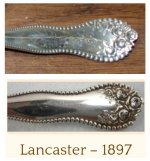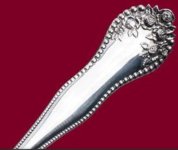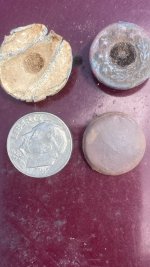HistoryTeacher
Sr. Member
- Mar 9, 2017
- 292
- 611
- Detector(s) used
- Garrett Ace 400
- Primary Interest:
- All Treasure Hunting
For $2.00?
I welcome your thoughts and am open to being wrong, but I had a nice morning at two Thrift stores that deliver for me about once a year.
I got all four pieces for a total of $6.00+ tax.
The spoon just looked and felt right. Looking at the roses, it has probably lost a few grams from numerous polishings. When I got it home, I could just make out some lumps of former marks right were the bowl meets the handle. And it tested silver. If anyone recognizes the pattern/era let me know.
I have spent some time on researching the cake knife. It weighs in at 114 grams, is 11.5" long, and tests silver.
It is marked with what appears to be an "X" and "RIKEMAN". What is up with the "X"?
I have been able to find a Horton and Rikeman who made silver in Savannah in shop from 1850-56.
The pie knife in the last picture is a Horton and Rikeman and seems very similar in style. Maybe they broke up? Can't find either of them in most major online guides.
Let me know if you think I am on the right track. I love the idea of finding some home grown antebellum silver.
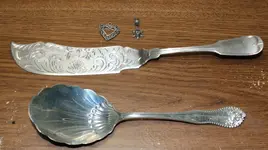
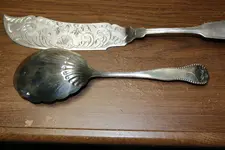
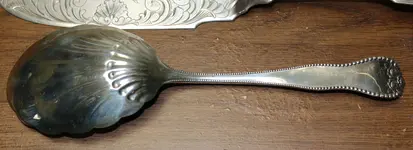
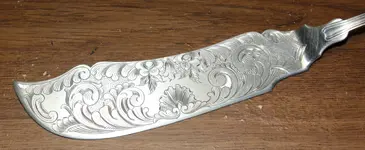
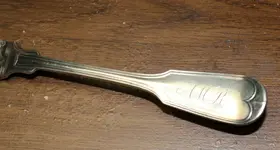
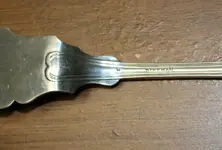
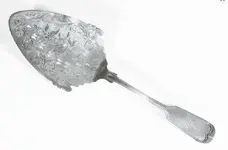
I welcome your thoughts and am open to being wrong, but I had a nice morning at two Thrift stores that deliver for me about once a year.
I got all four pieces for a total of $6.00+ tax.
The spoon just looked and felt right. Looking at the roses, it has probably lost a few grams from numerous polishings. When I got it home, I could just make out some lumps of former marks right were the bowl meets the handle. And it tested silver. If anyone recognizes the pattern/era let me know.
I have spent some time on researching the cake knife. It weighs in at 114 grams, is 11.5" long, and tests silver.
It is marked with what appears to be an "X" and "RIKEMAN". What is up with the "X"?
I have been able to find a Horton and Rikeman who made silver in Savannah in shop from 1850-56.
The pie knife in the last picture is a Horton and Rikeman and seems very similar in style. Maybe they broke up? Can't find either of them in most major online guides.
Let me know if you think I am on the right track. I love the idea of finding some home grown antebellum silver.










